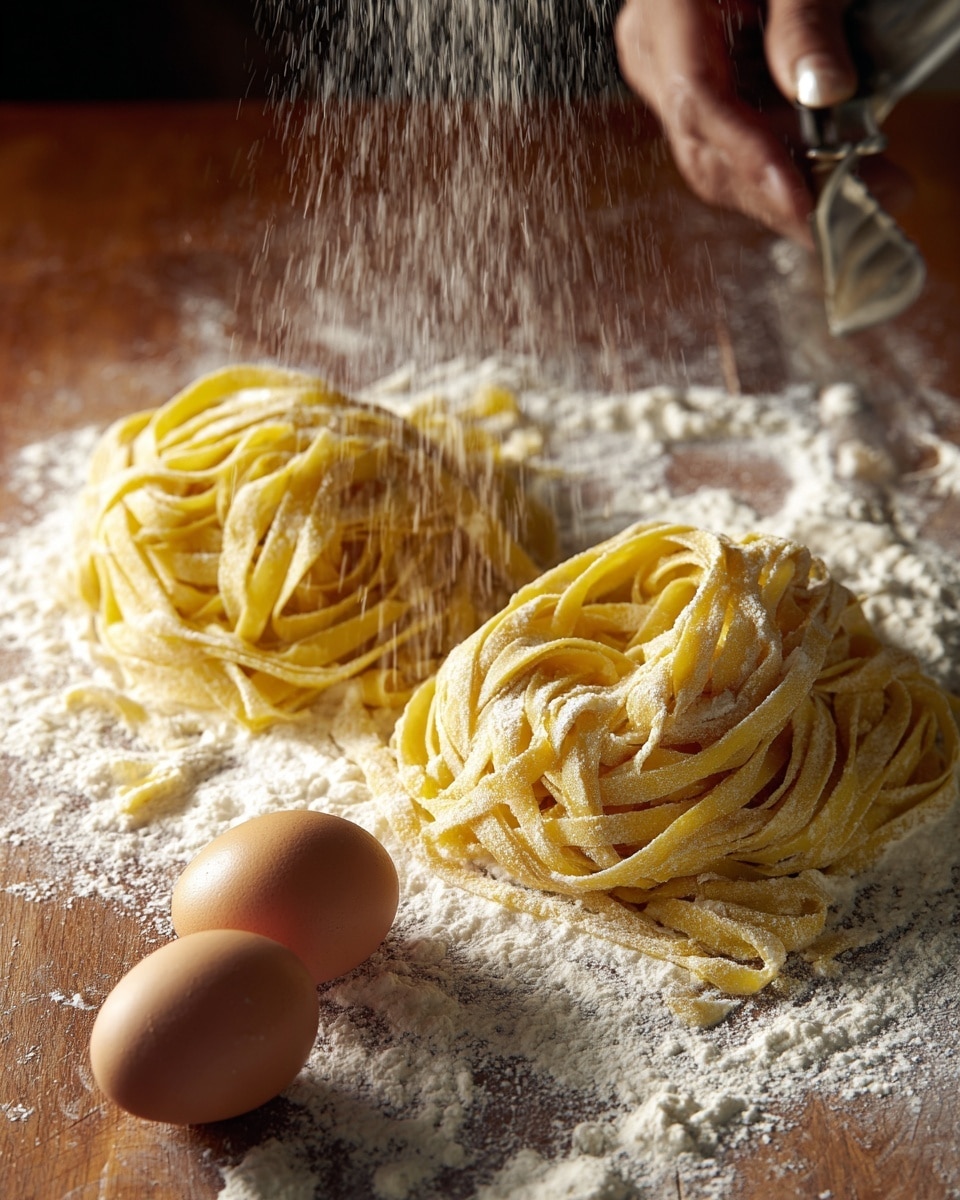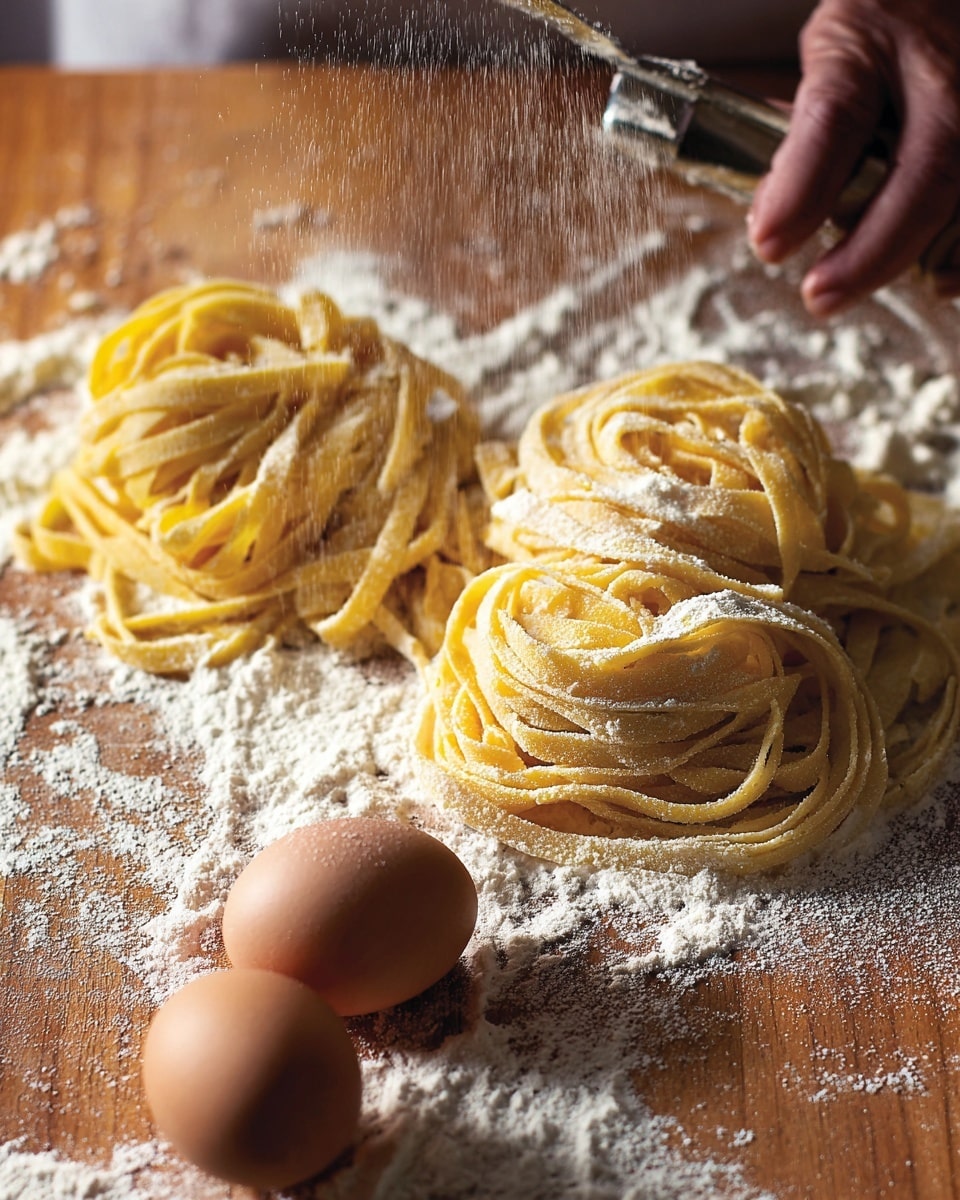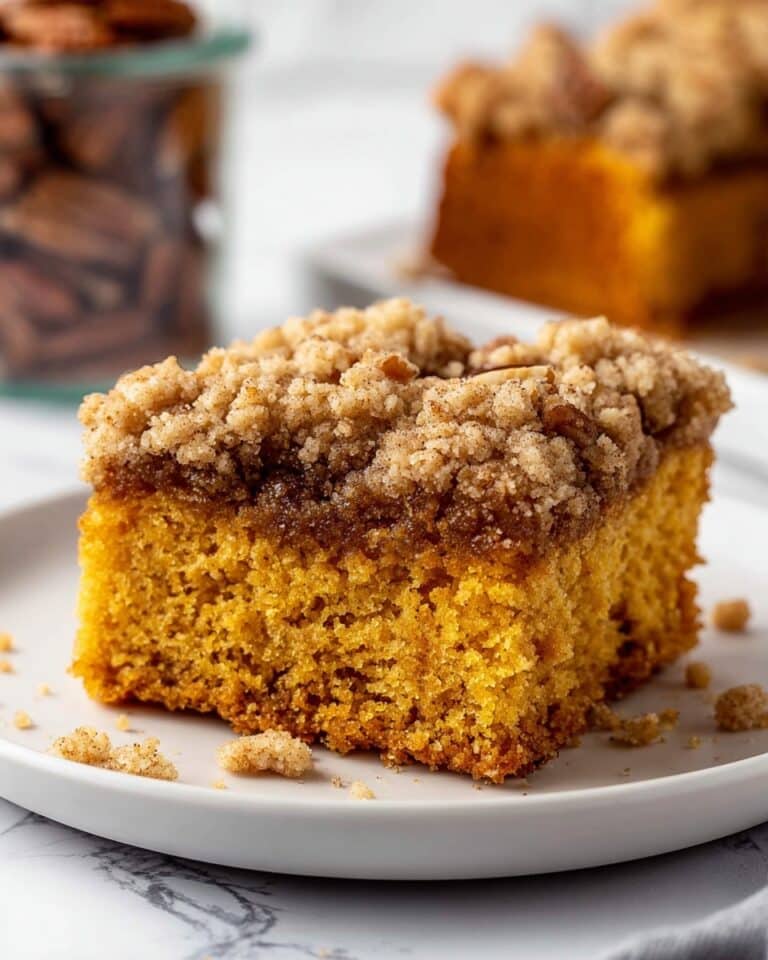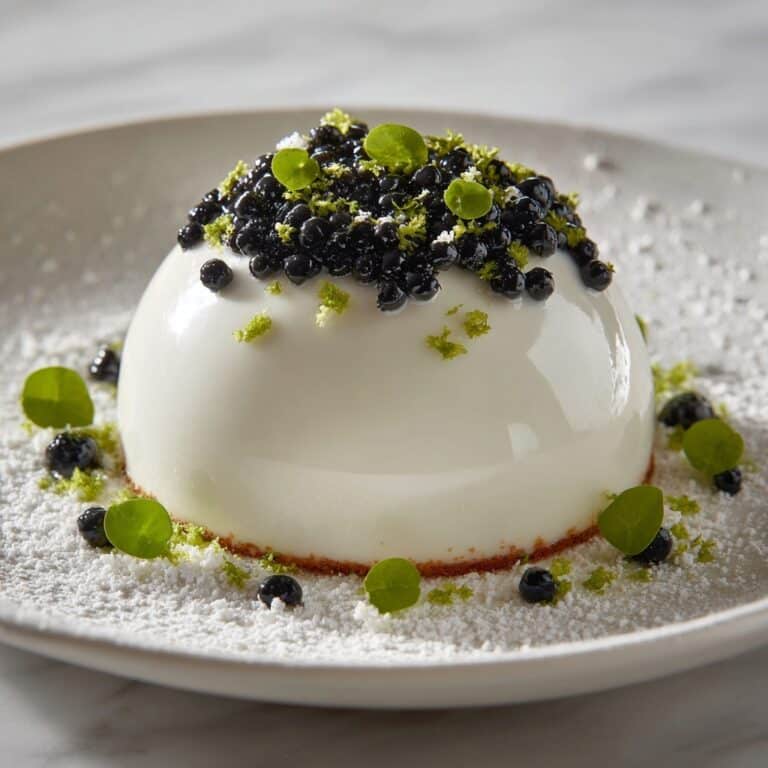If you’re craving a comforting, delicious dish that embodies the heart of Italian cooking, this Homemade Pasta Recipe is exactly what you need. It transforms a handful of simple pantry staples into tender, fresh noodles that taste miles away from any store-bought package. Making your own pasta might sound intimidating, but this recipe breaks it down into a few easy, satisfying steps that anyone can master. The result is that perfect slightly chewy texture and rich flavor that only fresh pasta can bring to your table. Once you try it, you’ll be hooked on the joy of creating homemade noodles from scratch.
Ingredients You’ll Need
It’s amazing how just a few simple ingredients come together to create such a rewarding homemade pasta. Each one adds something essential, building the foundation for tenderness, elasticity, and subtle flavor in your dough.
- 2 cups all-purpose flour: This provides the structure and body of the pasta, with a nice balance of gluten development and tenderness.
- 3 large eggs: Eggs add moisture, richness, and act as a natural binder to bring everything together smoothly.
- ½ teaspoon salt: Just the right pinch to enhance the pasta’s flavor without overpowering it.
- 1 tablespoon olive oil: Adds a silky texture and helps the dough stay supple.
- Extra flour for dusting: Essential for preventing sticking while rolling and cutting your dough.
How to Make Homemade Pasta Recipe
Step 1: Prepare Your Work Surface and Mix Dough
Start by creating a mound of flour on a clean surface or placing it in a large bowl. Make a well in the center, breaking the eggs into it. Add the salt and olive oil too. Using a fork, gently whisk the eggs while slowly pulling in the flour from the edges. This technique helps you gradually incorporate the flour without forming lumps, setting the stage for a smooth dough texture that’s easy to knead.
Step 2: Knead Until Smooth and Elastic
When the dough starts to come together, switch to your hands and knead for about 8 to 10 minutes. This step is key—it develops the gluten, giving the pasta strength and that perfect chew. You’ll know it’s ready when the dough feels soft, smooth, and elastic but not sticky. If it feels too dry, sprinkle a tiny bit of water; if too sticky, dust with flour sparingly.
Step 3: Let the Dough Rest
Wrap the dough tightly in plastic wrap and allow it to rest at room temperature for 30 minutes. This resting period relaxes the gluten, making the dough far easier to roll out and shape later on without snapping back.
Step 4: Roll and Shape Your Pasta
Divide your dough into manageable portions—either two or four pieces works well. Dust your surface and rolling pin (or pasta machine) with flour to keep things moving smoothly. Roll each piece out to your desired thickness. Then, cut into fettuccine, tagliatelle, or lay out flat for lasagna sheets. The possibilities for shapes are charmingly endless and totally up to your creativity.
Step 5: Cook Your Fresh Pasta
Bring a large pot of salted water to a boil. Fresh pasta cooks quickly, usually in just 2-3 minutes. Gently add your noodles and watch for the tender, slightly firm “al dente” texture. Once done, drain and serve immediately to experience the true magic of homemade noodles.
How to Serve Homemade Pasta Recipe
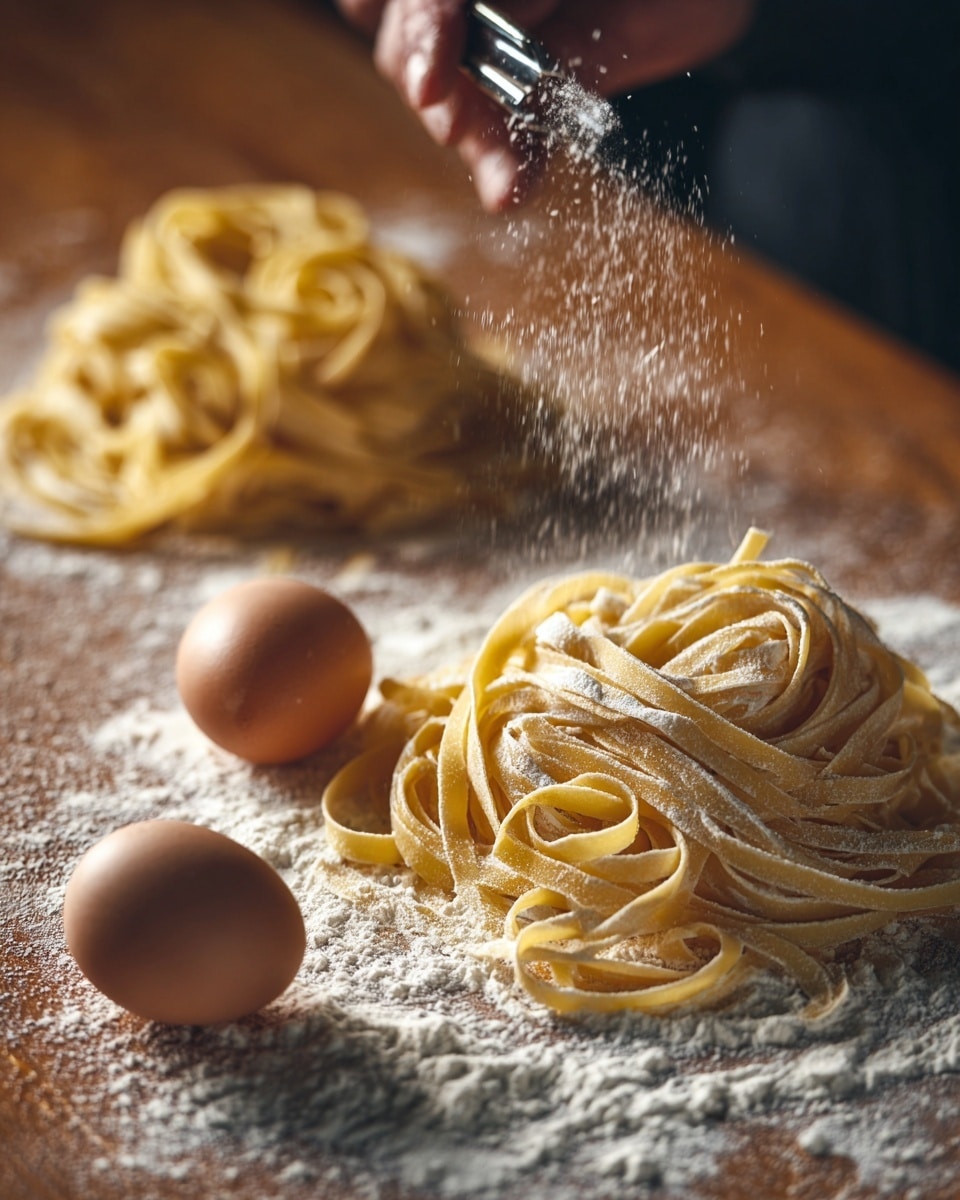
Garnishes
Simple garnishes like freshly grated Parmesan, torn basil leaves, or a drizzle of extra-virgin olive oil elevate your dish with added aroma and bursts of flavor. A little cracked black pepper and a sprinkle of crushed red chili flakes can also bring lovely complexity without stealing the show from your handmade pasta.
Side Dishes
Fresh pasta pairs wonderfully with light, vibrant sides. Consider a crisp green salad with lemon vinaigrette or roasted vegetables tossed in garlic and herbs. These fresh, bright sides balance the richness of your pasta, creating a meal that feels wholesome but indulgent.
Creative Ways to Present
Transform your homemade pasta into a memorable centerpiece by arranging your pasta in neat nests on colorful plates or serving lasagna sheets layered with vibrant sauces and cheese in a rustic bake. You can even drizzle with a vibrant herb oil or swirl your pasta with seasonal vegetables for a colorful presentation that invites second helpings.
Make Ahead and Storage
Storing Leftovers
If you have leftover fresh pasta, lay it out flat on a floured tray to prevent sticking and cover it with plastic wrap or a damp cloth. Store it in the refrigerator and use within a day or two for the best texture and flavor.
Freezing
To keep your homemade pasta longer, freeze it. Lay the pasta in a single layer on a parchment-lined tray and freeze until firm, then transfer to a freezer bag. Frozen fresh pasta can last up to two months and cooks just as quickly straight from the freezer—perfect for future cravings.
Reheating
Reheat cooked pasta gently by briefly tossing it in boiling salted water for 30 seconds to one minute or warming in a skillet with a bit of sauce. Avoid microwaving as it can dry out the pasta and affect the texture.
FAQs
Can I use whole wheat flour for this Homemade Pasta Recipe?
Yes! Whole wheat flour adds a nutty flavor and extra fiber but will make the dough denser. You can substitute half or all of the all-purpose flour with whole wheat for a heartier pasta.
Do I need a pasta machine to make this recipe?
Not at all! While a pasta machine makes rolling out thinner sheets easier, a rolling pin works just as well. It just takes a bit more elbow grease and patience.
How long does fresh pasta last once made?
Fresh pasta is best enjoyed the same day it’s made. If stored properly in the fridge, it can last up to two days, but its texture is optimal right after preparation.
Can I add flavors or colors to the pasta dough?
Absolutely! Incorporating spinach puree, beet juice, or herbs into the dough creates beautiful colors and exciting flavors, adding a unique spin to your homemade pasta recipe.
What sauces pair best with fresh pasta?
Fresh pasta’s delicate texture is versatile. Light sauces like a simple garlic and olive oil dressing, fresh tomato sauce, or a buttery herb sauce highlight its freshness beautifully without overwhelming it.
Final Thoughts
There’s something truly special about making pasta from scratch that connects you with a centuries-old tradition of Italian cooking. This Homemade Pasta Recipe is simple enough to try on a weekday but impressive enough for company. Once you experience the tenderness and pure flavor of fresh noodles, you’ll wonder why you ever settled for anything less. So roll up your sleeves, gather your ingredients, and have fun turning flour and eggs into a beautiful, delicious meal your whole family will love.
Print
Homemade Pasta Recipe
- Prep Time: 40 minutes
- Cook Time: 3 minutes
- Total Time: 43 minutes
- Yield: 4 servings
- Category: Main Course
- Method: Boiling
- Cuisine: Italian
- Diet: Vegetarian
Description
This classic Homemade Pasta recipe teaches you how to create fresh, tender pasta from scratch using simple pantry ingredients. The dough comes together with flour, eggs, salt, and olive oil, then rests before rolling out to your desired thickness. Whether you make fettuccine, tagliatelle, or lasagna sheets, cooking it briefly in boiling salted water results in perfect al dente noodles. Serve immediately with your favorite sauce for an authentic Italian meal.
Ingredients
Dry Ingredients
- 2 cups all-purpose flour
- ½ teaspoon salt
- Extra flour for dusting
Wet Ingredients
- 3 large eggs
- 1 tablespoon olive oil
Instructions
- Prepare the dough: On a clean surface or in a large mixing bowl, mound the flour and create a well in the center. Crack the eggs into the well, add salt and olive oil, then use a fork to gradually incorporate the flour into the eggs until a shaggy dough forms.
- Knead the dough: Use your hands to knead the dough for about 8–10 minutes until it becomes smooth and elastic, which develops the gluten for a perfect pasta texture.
- Rest the dough: Wrap the kneaded dough tightly in plastic wrap and let it rest at room temperature for 30 minutes. This relaxes the gluten and makes the dough easier to roll out.
- Roll and cut the pasta: Divide the rested dough into 2 or 4 pieces. Using a pasta machine or a rolling pin, roll each piece out to your preferred thickness. Then cut into shapes such as fettuccine or tagliatelle, or keep as sheets for lasagna.
- Cook the pasta: Bring a large pot of salted water to a boil. Add the pasta and cook for 2–3 minutes until al dente. Fresh pasta cooks quickly, so keep an eye on it.
- Serve: Drain the pasta and serve immediately with your favorite sauces like marinara, Alfredo, or pesto for a delicious meal.
Notes
- For added flavor and color, incorporate spinach puree or beet juice into the dough.
- Substitute semolina flour for a firmer texture and more bite.
- Leftover fresh pasta can be dried for storage or frozen for future use.

